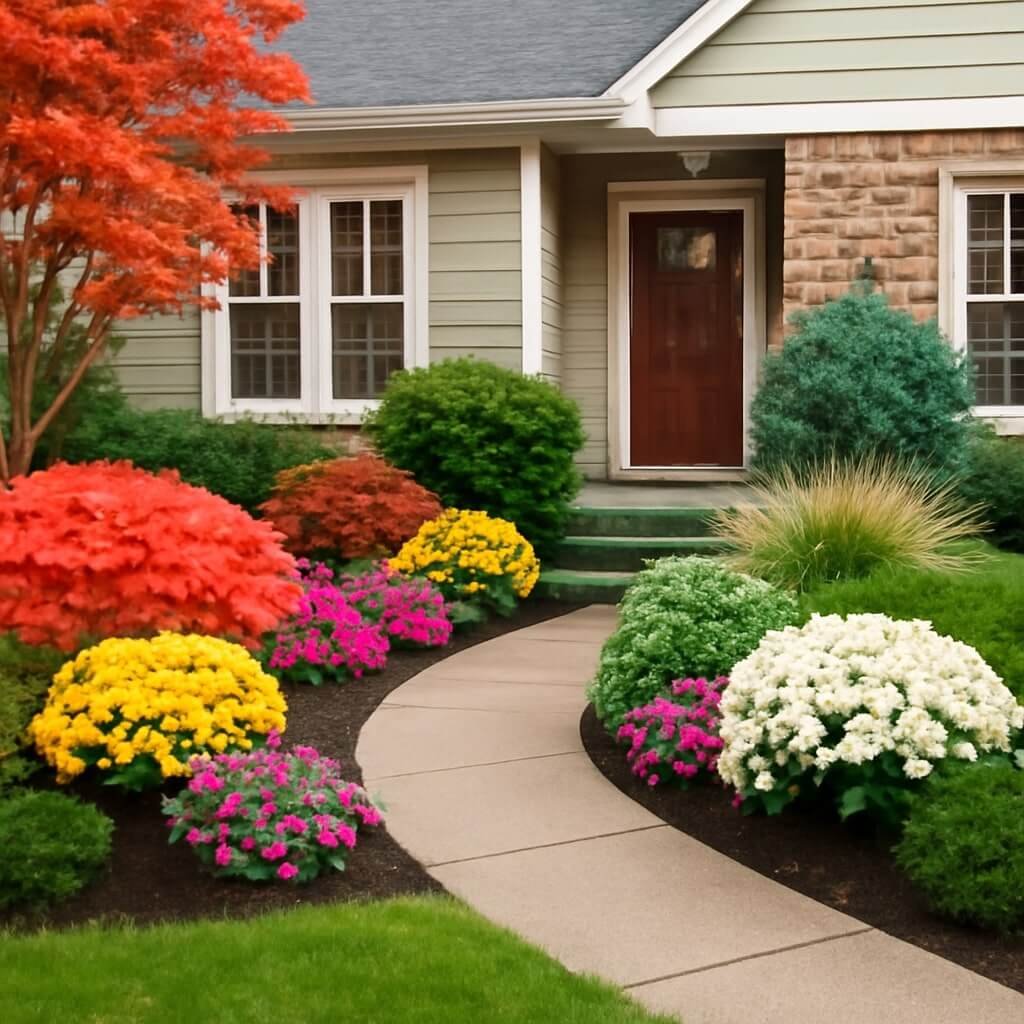Keeping your yard stunning all year long is no small feat, but it’s achievable with the right approach. Seasonal curb landscaping is about more than just planting flowers in spring or raking leaves in fall; it’s about planning and caring for your outdoor space through every weather shift and temperature change. A well-maintained yard can boost your home’s curb appeal, increase property value, and create a welcoming environment for friends, family, and neighbours.
In this article, we’ll explore 20 expert strategies to help you maintain a gorgeous yard year-round. From understanding your climate zone to picking the right plants for each season, and even cost-effective landscaping tips, you’ll have all the tools you need to transform your yard into a beautiful haven through spring, summer, fall, and winter.
Planning Your Seasonal Landscape
Understanding Your Climate Zone
Your landscaping success largely depends on knowing your climate zone. Plants that thrive in Florida’s humid heat won’t necessarily survive a harsh Midwest winter. The USDA Hardiness Zone Map is a great starting point — it categorises regions based on average minimum winter temperatures. Knowing your zone helps you select plants that are suited to your environment, minimising plant stress and maintenance efforts.
Soil Preparation for All Seasons
Healthy soil is the foundation of every stunning landscape. To prepare your soil for seasonal planting, start by testing its pH and nutrient levels. Adjust the soil as needed with organic matter like compost, which improves drainage, fertility, and microbial activity. This preparation ensures your plants get off to a strong start, whether it’s early spring or late fall.
Spring Landscaping Tips
Selecting Spring-Blooming Plants
Spring is the season of rebirth, making it perfect for vibrant colours and fresh growth. Bulbs like tulips, daffodils, and crocuses are classic choices that pop up with bright blooms. Perennials such as peonies and irises also bring lasting beauty year after year. Adding a mix of these plants guarantees continuous colour through the season.
Preparing Lawns for Spring Growth
After winter’s dormancy, your lawn needs attention to bounce back. Start with aeration to relieve soil compaction, followed by overseeding bare patches to encourage thick, lush grass. Fertilising with a balanced formula rich in nitrogen boosts new growth, helping your lawn become a vibrant green carpet.
Summer Landscaping Tips
Drought-Tolerant Plants for Summer
Hot, dry summer days can be tough on your landscape, but drought-tolerant plants like lavender, sedum, and ornamental grasses thrive in these conditions. These hardy species require less water and still offer appealing textures and colours, reducing your watering needs and maintenance.
Efficient Watering Techniques
Smart watering is key during summer heat. Water deeply but infrequently early in the morning or late in the evening to reduce evaporation. Consider drip irrigation or soaker hoses to deliver water directly to roots, conserving water and promoting healthy growth.
Fall Landscaping Tips
Choosing Fall Foliage Plants
Fall’s rich, warm colours add charm and depth to your yard. Plants like chrysanthemums, asters, and ornamental kale offer bursts of colour when many other flowers fade. Trees such as maples and oaks provide spectacular foliage displays, turning your curb appeal into a masterpiece of reds, oranges, and yellows.
Mulching and Leaf Management
Mulching in fall protects your soil from temperature swings and retains moisture. Use organic mulch such as shredded leaves or bark around plants and trees. Regularly manage fallen leaves by composting them or using a mulching mower, which recycles nutrients back into your lawn.
Winter Landscaping Tips
Selecting Evergreens and Winter Interest Plants
When most plants go dormant, evergreens like boxwoods, hollies, and pine trees keep your yard vibrant. These plants provide structure and greenery all winter long. Adding shrubs with colourful berries or interesting bark can also create focal points when flowers are scarce.
Protecting Plants from Frost and Snow
Winter protection is vital for sensitive plants. Use burlap wraps, frost cloths, or even DIY covers to shield plants from freezing temperatures. Applying a thick layer of mulch around root zones insulates the soil and prevents damage caused by freeze-thaw cycles.
Seasonal Tools and Equipment
To maintain curb appeal year-round, invest in essential tools such as a quality lawn mower, pruning shears, a leaf blower, and garden gloves. Seasonal tools like aerators, mulchers, and irrigation timers can make your landscaping tasks more efficient and enjoyable.
Common Mistakes to Avoid in Seasonal Landscaping
Many homeowners make avoidable mistakes like overwatering, neglecting soil health, or planting unsuitable species. Avoid crowding plants, which can lead to poor air circulation and disease. Also, don’t ignore seasonal pruning — it encourages healthy growth and maintains plant shape.
Eco-Friendly Landscaping Practices
Sustainable landscaping is more important than ever. Use native plants to support local wildlife, reduce chemical fertiliser and pesticide use, and capture rainwater for irrigation. These eco-friendly habits help protect the environment while maintaining a beautiful yard.
Hiring Professional Help vs. DIY
Deciding between professional landscapers and DIY projects depends on your skill level, time, and budget. Pros bring expertise and save time, but can be costly. For smaller projects or routine maintenance, DIY can be rewarding and budget-friendly.
Cost-Effective Landscaping Ideas
Maintaining curb appeal doesn’t have to drain your wallet. Choose perennials over annuals, propagate plants yourself, and shop for native species. Reuse materials like stones or wood for garden borders and compost yard waste to enrich your soil naturally.
Frequently Asked Questions (FAQs)
How often should I water my lawn in summer?
What are the best plants for all-season curb appeal?
How can I protect my plants during winter?
Is mulching necessary every season?
Can I do seasonal landscaping on a budget?
When is the best time to hire a professional landscaper?
Conclusion: Maintaining Year-Round Curb Appeal
Creating and maintaining a stunning yard throughout the year takes planning, care, and a bit of effort, but it’s well worth it. By understanding your climate, choosing the right plants, and using smart seasonal strategies, you’ll enjoy a beautiful outdoor space that’s always inviting. Remember, consistent care is the key — a thriving landscape is a reflection of ongoing attention and passion.



